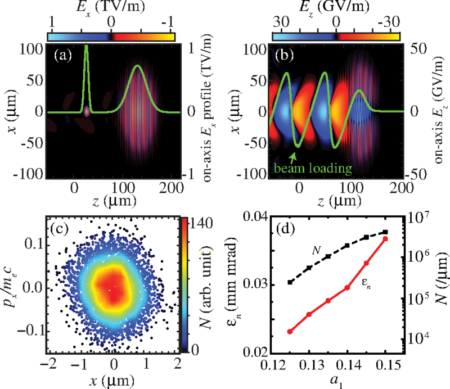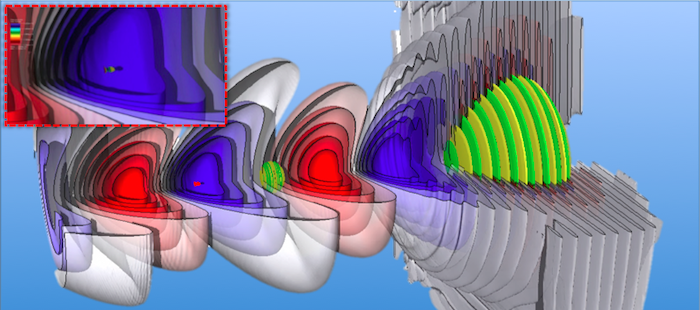Warp is a particle-in-cell (PIC) framework designed to simulate high current particle beams and plasmas, incorporating a variety of integrated physics models and extensive diagnostics. The PIC method is implemented in axisymmetric, transverse-slice, and fully three-dimensional modes.
Warp has been used in a wide range of applications, including:
- Modeling of high current induction accelerators for Heavy Ion Fusion (the original use of Warp).
- Modeling of plasma traps for the production of anti-hydrogen; Paul traps; and the non-conventional Penning-Malmberg micro-trap.
- Transport of electron beams in the University of Maryland Electron Ring.
- Electron cyclotron resonance (ECR) ion sources.
- Capture and control of laser-accelerated proton beams.
- Fundamental studies of multipacting.
- Study and design of existing and next generation high-energy accelerators.
including the study of electron cloud effects, coherent synchrotron radiation, and laser wakefield acceleration.
Here is an extensive list of Warp applications, organized by discipline.
 |
A Warp simulation of two-color injection, a new method that has been proposed for introducing very-low-emittance electron beams into plasma-based accelerators. (a) Electric field of the laser pulses (green curve is on-axis laser field profile); (b) Longitudinal wakefield (green curve is on-axis wakefield); (c) Transverse phase space of the injected electrons, after the mixed-gas ionization injection region; and (d) The normalized transverse emittance (red solid curve) and trapped electron number (black dashed curve) versus the injection pulse amplitude. After Yu et al., “Two-color laser ionization injection,” Physical Review Letters 112, 125001 (24 March 2014), Figure 2. |
The code is set up around the interactive Python interpreter with dynamically loaded compiled code modules. This allows flexible problem descriptions which can exploit the full versatility of Python and compiled packages as well as allowing interactive steering of runs. The user has complete control of how simulations proceed and has direct access to all data, allowing arbitrary diagnostics. Warp has the following features and capabilities:
- A hierarchy of multi-species models ranging from full 3D, transverse slice x-y (including pz), and axisymmetric r-z (including ptheta).
- Boosted-frame mode.
- Leap-frog, drift-Lorentz, and Lorentz invariant particle movers.
- Various advanced electrostatic and electromagnetic field solvers with mesh.
- refinement, internal structures and various boundary conditions.
- Child-Langmuir-like and thermionic emission.
- Beam envelope models.
- Can be used in serial and parallel environments.
To produce the image below (from the laser-plasma accelerator simulations described earlier) Warp was augmented with the Lawrence Livermore National Laboratory data visualization and analysis tool VisIt.

To Learn More…
Warp has an extensive wiki page that includes publications about the code and its applications.
Warp is often used together with Posinst.
